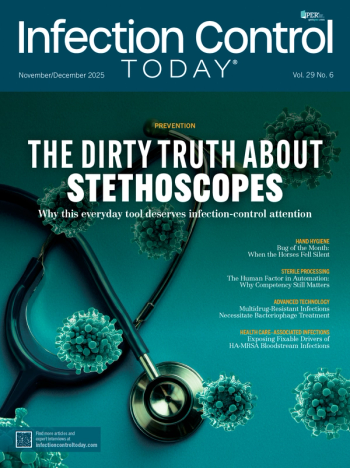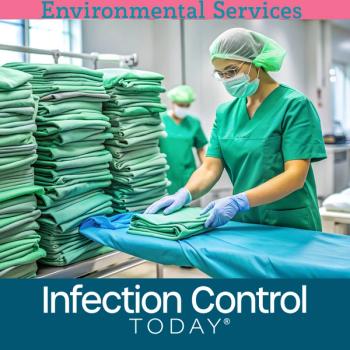
Why Infection Preventionists Belong in the C-Suite
Elevating IPs into executive leadership isn't symbolic; it's a strategic imperative.
Over the past 25 years, infection preventionists (IPs) have transformed from tactical specialists into strategic leaders. Their scope now encompasses system-wide risk mitigation, public health crisis coordination, regulatory compliance, change management, and enterprise-wide patient safety. Influencing without title or authority. Despite this evolution, IPs remain largely absent from executive leadership roles.
The exclusion of IPs from the C-suite is more than a missed professional opportunity; it is a structural weakness in health care governance.
IPs Think and Lead Like Executives
IPs possess a skill set that mirrors the core competencies of senior healthcare executives. They analyze complex data, operate in multidisciplinary environments, make high-stakes decisions under uncertainty, and lead change across diverse departments.
IPs routinely engage stakeholders across clinical, environmental, engineering, IT, and supply chain divisions. They don’t just respond to infections; they anticipate system failures, identify upstream risks, and implement sustainable, cross-functional solutions. These are not support tasks; they are executive-level responsibilities.
Data-Driven Operators
IPs live and breathe metrics. Surveillance data, adherence audits, benchmarking, and reporting systems are part of their daily landscape. They are experts at translating raw data into actionable strategies that drive measurable improvement. In today’s health care landscape, where data storytelling and evidence-based decision-making dominate the boardroom, IPs are natural contributors.
Whether interpreting surveillance trends or developing dashboards for hand hygiene adherence, IPs do more than track outcomes. They identify gaps, advocate for resources, and lead the implementation of corrective action. This fluency in operational metrics positions them well to bridge clinical knowledge and executive insight.
Crisis Leaders
The COVID-19 pandemic brought IPs out of the shadows and into the spotlight. IPs led under pressure, made ethically complex decisions, translated evolving science into policy, and communicated risk clearly to stakeholders at every level.
These experiences are not unique to COVID-19; they reflect a broader truth: IPs are crisis-tested leaders. Their ability to manage ambiguity, integrate new information in real time, and guide multidisciplinary teams during high-stakes situations directly prepares them for executive leadership roles, where composure and adaptability are critical.
Influencers Without Authority
One of the most underappreciated skills in infection prevention is the ability to influence change without direct control. IPs are rarely the "boss" of the people they must influence. Yet they drive sustained behavior change across nursing units, physician practices, environmental services, facilities, administration, and leadership.
This ability to lead by influence—not just by title—is a hallmark of exceptional executives, especially at the chief operating officer and chief executive officer levels. IPs routinely build coalitions, navigate organizational dynamics, and inspire action across departments, even when they lack formal authority. These are precisely the relational and political skills required in complex health care systems.
Mission-Driven Leadership
Infection prevention is not about personal recognition; it’s about purpose. IPs work tirelessly to protect others, often behind the scenes and without fanfare. This quiet, service-oriented mindset nurtures the kind of authentic leadership that healthcare desperately needs.
When mission-driven professionals step into executive roles, they bring integrity, humility, and a clear moral compass. These values are increasingly prized in leadership today, especially as patients, staff, and communities look to health systems not only for care, but for trust.
Core Competency: Enterprise Risk Management
Risk management is a central pillar of executive decision-making. IPs specialize in recognizing, quantifying, and mitigating risk in real time. From preventing outbreaks and minimizing healthcare-associated infections (HAIs) to ensuring compliance with evolving regulations, IPs lead efforts that directly affect patient outcomes and institutional liability.
They also bring an enterprise mindset, bridging the gap between clinical operations and administrative oversight. This strategic alignment is vital in an era when infection prevention is linked not just to clinical metrics, but to financial stability, accreditation outcomes, and public trust.
Accreditation Bodies Are Signaling the Shift
Major accrediting agencies now codify the changing expectations around infection prevention. The Joint Commission, in its updated Infection Prevention and Control (IC) standards, asserts:
“Adherence to infection prevention and control practices is essential to providing safe and high-quality patient care across all settings where health care is delivered.”¹
Furthermore, IC.05.01.01 holds an organization’s governing body accountable for ensuring that infection prevention programs are properly resourced and empowered to operate across the enterprise.² This reflects a growing consensus: Infection prevention is no longer a siloed clinical function. It is an operational imperative.
Health care systems should respond accordingly by formally integrating IP leadership into their governance models.
Leadership Visibility Drives Cultural Change
When IPs are positioned in the C-suite, their visibility enhances organizational culture. Infection prevention becomes embedded in strategic planning rather than appended to regulatory compliance. Staff across departments are more likely to engage when they see senior leaders modeling infection prevention as a shared responsibility.
It also influences the profession’s future. Early-career IPs, epidemiologists, and public health professionals need to see a pathway into executive roles. Leadership visibility affirms that infection prevention is not only essential but also leadership-worthy.
A Call to Action: Structural Integration
Health systems must establish infection prevention as a formal leadership track. This includes:
- Creating vice president or chief infection prevention officer roles with direct executive reporting
- Designing succession planning and mentorship programs for IPs
- Recruiting IPs with advanced credentials (AL-CIP, FAPIC, FACHE, etc.) into senior roles
- Educating human relations, search firms, and boards about the strategic value of IPs
This is not about representation. It is about realigning leadership architecture to meet the safety, quality, and operational challenges of modern health care.
A Ready-Made Leadership Pipeline
As organizations confront executive turnover, workforce shortages, and regulatory pressures, they cannot afford to overlook the leadership talent already embedded within infection prevention programs. IPs have demonstrated their capacity to lead under crisis, manage uncertainty, and drive system-wide improvements.
IPs are already performing at the level expected of C-suite leaders. It is time health care organizations give them the authority, title, and platform to lead accordingly.
References
- The Joint Commission. Infection Prevention and Control (IC). The Joint Commission website.
https://www.jointcommission.org/standards/standard-faqs/hospital-and-hospital-clinics/infection-prevention-and-control-ic/ . Accessed July 1, 2025. - The Joint Commission. IC.05.01.01: The governing body is accountable for the organization’s IPC efforts. The Joint Commission website.
https://www.jointcommission.org/standards/standard-faqs/hospital-and-hospital-clinics/infection-prevention-and-control-ic/ic050101/ . Accessed July 1, 2025.
Newsletter
Stay prepared and protected with Infection Control Today's newsletter, delivering essential updates, best practices, and expert insights for infection preventionists.





